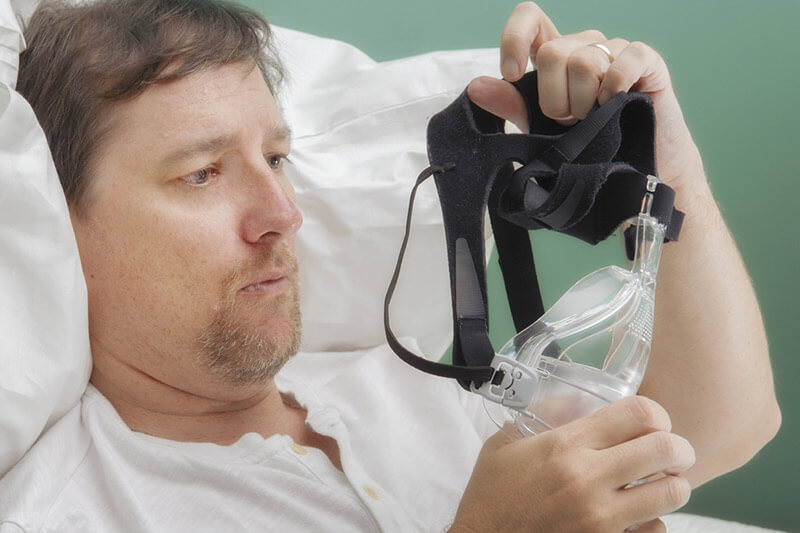If your CPAP mask leaks air, you are definitely not alone. Around 45% of all CPAP users find it pretty hard to keep a mask seal, with most of them quitting their therapy instead of simply dealing with the problem. This is why we’re here to help you keep your CPAP mask leak-proof and maximize the effectiveness of your prescribed therapy.

Types Of CPAP Mask Leaks
In order to determine the causes of CPAP mask leaks, we first have to see how they work. The CPAP machine utilizes air pressure as an internal splint that ensures uninterrupted air circulation. This is why maintaining a perfect seal is so important since insufficient pressure won’t be able to keep your airways open, rendering the entire CPAP therapy quite ineffective.
Next, we have to go over the available types of CPAP masks. There are full-face masks, nasal masks, and nasal pillows. All of these types have different reasons for air leakage and different solutions to the problem. Since a full-face CPAP mask covers both airways, the only way for it to leak air is through a compromised mask seal. This commonly occurs when your bottom jaw hinges while you’re asleep. You can usually fix the problem with a simple chinstrap, but this won’t work 100% of the time.
On the other hand, nasal masks and nasal pillows cover only your nose, which leaves room for the so-called “mouth leakage.” In other words, if you start breathing through your mouth in the middle of the night, your nasal CPAP mask is basically useless.
Common Causes Of CPAP Air Leakage + Solutions
In order to increase your chances of solving this serious problem, we’ll provide you with a comprehensive schematic of the most common causes of CPAP air leakage and point out some of the most effective solutions:
- Your mask is too small/too big – This can usually be solved by adjusting the straps if they’re too tight or too loose. If this doesn’t help, you’ll have to try a different style or size.
- You move around a lot in your sleep – Your muscles relax while you sleep, which changes the overall shape of your face. Make sure to adjust your CPAP mask while in a sleeping position.
- Your mask doesn’t fit your facial structure – There’s not much you can do here except changing the style you’re currently using.
- The pressure is too high – You can fix this by using the Ramp feature or switching to a different machine.
- Your mask is just worn out – CPAP masks made by reputable manufacturers should last you about a year, after which you should select a new mask.
- Your mask just isn’t sitting properly – Make sure you follow the manufacturer’s directions when it comes to cleaning your CPAP equipment. Additionally, you should wash and moisturize your face before using the mask.
As you can see, in some cases, you won’t have any other choice but to replace your current mask. However, if it can be avoided, these tips will definitely point you in the right direction.